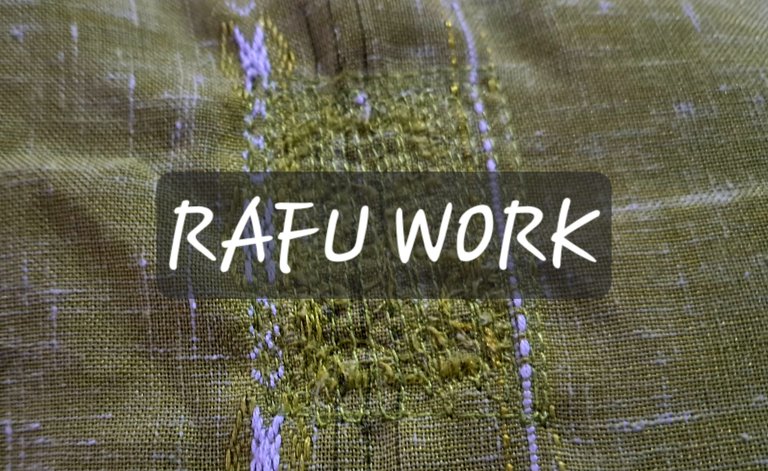Where creativity meets needle and thread.
Wearing clothes for as long as possible is a sustainable practice, reducing textile waste and the environmental impact of fast fashion. The changing lifestyle and fashion encourages people to buy new cloth and discard the old one. But not in my case, I alwsys prefer to wear as long as it suits me and I am comfortable to wear. Recently, one of my akurta was torned at the back. Many people asked me to discard them and give it to someone, but I am no mood to throw it so lightly. And finally I went on the tailor to repair it and now my cloth all new once again.

(own edited image)
Best part is that the torn part is not visible at all. It was the master work of the tailor, who sewed it so perfectly that Noone can find out the stiched. It was known as Rafu. Rafu stitching, also known as darning in English, is a good way to repair clothes because it reinforces the fabric around a hole or tear, preventing further damage and making the garment last longer. As I said, my wearable was very new and does not in a state to throw. But with the little repair, I find it worth wearing ince again.
Rafu stitching involves using a needle and thread to weave a new layer of fabric over a hole or tear, reinforcing the area and making it less visible. As my cloth has hile at the back side, it was very visible. The tailor needed some piece of same cloth to fill up the area. To areange the additional cloth, he shorted my side pocket piece and fix them on the hole. I like the way he managed all the work.
Lay the garment flat and smooth the fabric around the hole or tear.
Select a thread that matches the color and texture of the fabric.
Begin by sewing in a circular motion around the edge of the hole, pulling the thread tight to close it up.
Interweave the thread over and under the fabric, creating a dense, reinforced patch.
After some close knitted sewing, the hole disappear. It is hard to notice unless and untill you took a close eye. It is wonderful to wear the cloth again and again. It make to wonder, what others do with their torn cloth do you discard them or wear them after repairing?
In good faith - Peace!!

Posted Using INLEO
This post has been manually curated by @bhattg from Indiaunited community. Join us on our Discord Server.
Do you know that you can earn a passive income by delegating to @indiaunited. We share more than 100 % of the curation rewards with the delegators in the form of IUC tokens. HP delegators and IUC token holders also get upto 20% additional vote weight.
Here are some handy links for delegations: 100HP, 250HP, 500HP, 1000HP.
100% of the rewards from this comment goes to the curator for their manual curation efforts. Please encourage the curator @bhattg by upvoting this comment and support the community by voting the posts made by @indiaunited..
This post received an extra 20.00% vote for delegating HP / holding IUC tokens.
That's a great idea; we have the same mindset I do not throw clothes as long as it can be useful and can be repair.
Wow, I'm happy to hear this as a seamstress. Most times we just go into sewing without knowing the types of stitches available. I will check this up and see what more I can learn.
I am not of the class of discarding clothes as well, even when they begin to wear out, I rather recycle them into some new designs.
Thanks for sharing and coming around the community. How I wish to see the pictures of the rafu steps you have listed above.
Sometimes a tailor also has good arts in developing his sewing models.
This is so interesting for all the tailor and seamstress, I enjoy your page so much and I learn more from you, please stay with us and teach us more, welcome and thanks for sharing.